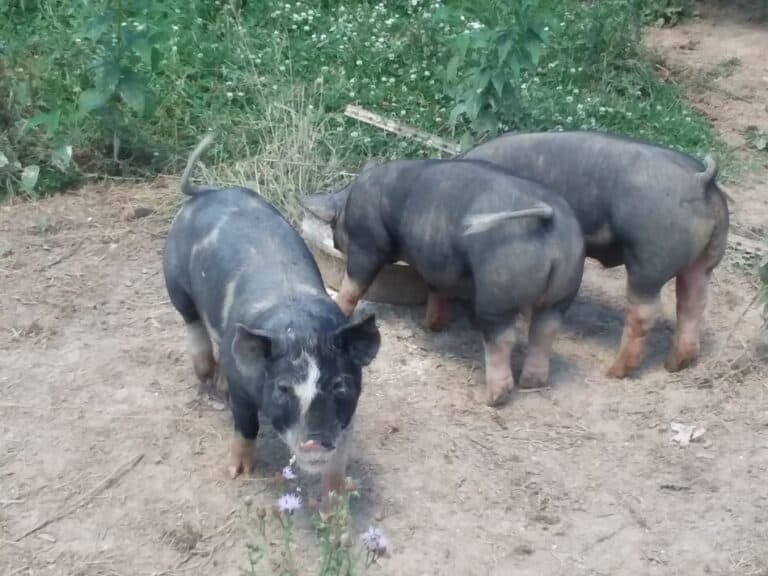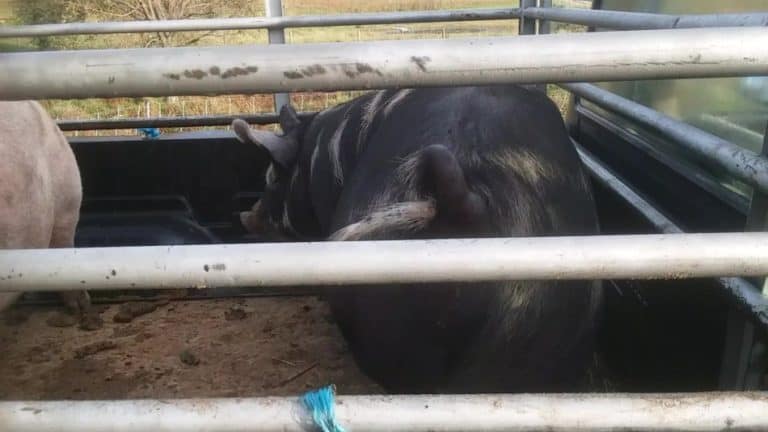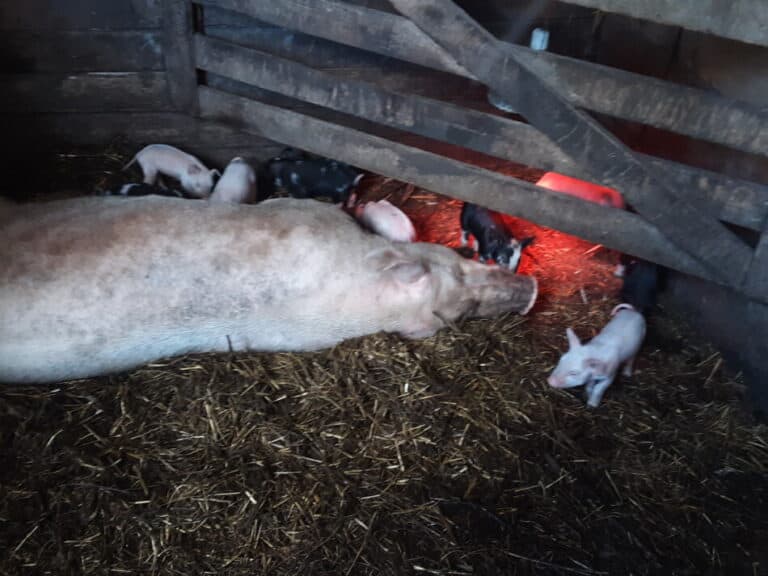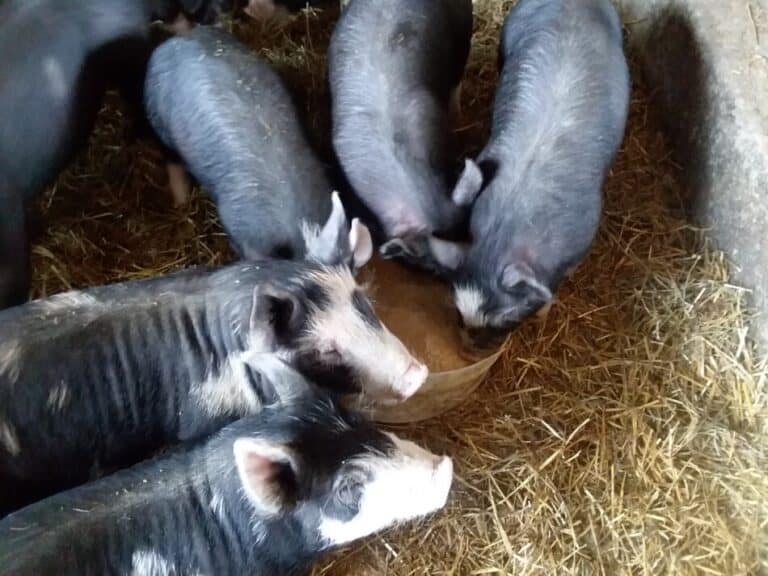12 Simple Tips For Raising Your Own Pigs
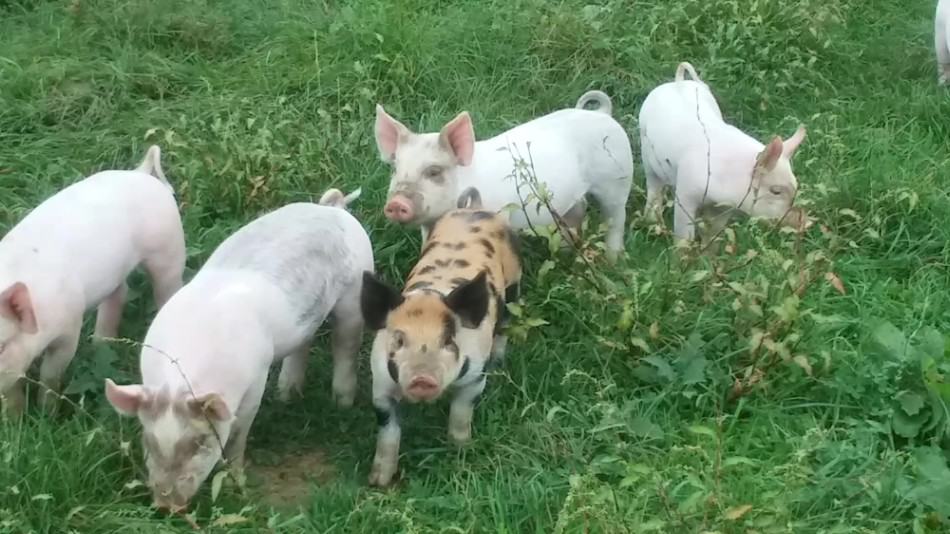
Raising a few pigs is a fun, beginner friendly start to raising your own meat. Here are 12 tips to make your pig raising adventure is a success!
1. Start with healthy pigs
This is the most important tip, which is why I listed it first!
Quality pays. That saying is 100% accurate. A high quality feeder pig will grow more for the same amount of feed and time that you put into your pigs as a poor quality pig.
If you start your pig raising experience with poor quality pigs, you will get poor quality results.
If you have first choice of the litter, definitely pick the biggest piglets. These piglets are the most likely to continue growing well when you get them home.
4 Must Have Items To Raise Pigs goes over the essential equipment you need to get started with pigs.
“Cheap” piglets
A group of feeder pigs that are a “really good deal or too cheap to pass up” will end up costing you more in the end.
Seriously, in terms of feed and time, the cheap ones end up not so cheap.
As long as they are not sick, these pigs will eventually reach an acceptable weight. It will take much longer and some will not ever finish (fatten) well.
Naturally Raise Happy, Healthy Pigs shows you the things you need to have available to your pigs to keep both you and your pigs happy!
2. Have more than one pig
Pigs need to have a buddy to live with. Pigs do not like to be by themselves.
Consider raising a pig for one of your friends or to sell along with the pig you have for yourself.
Like the litter of piglets pictured above, your pigs want to hang out together. Piglets enjoy playing around and exploring with their buddies.
3. Check the feeder
I know that “check the feeder” sounds like a lame tip, but stick with me here.
You’d be surprised how often this one will get you! Especially as your pigs get some size to them.
Here’s what happens. You get your feeder pigs, let’s say 3 pigs at a time, and that first batch of feed seems to last forever!
Then next time that same size batch of feed lasts a while, again.
True, you run out a bit sooner this time, but you’ve got this. What was the big deal, anyway?
And now you stop checking the feeder. (This is when things start to go wobbly.)
Before you know it those porkers are big enough that every few days you have to refill the feeder.
A refill used to last a few weeks and now it lasts a few days, yikes! Double yikes, if you can’t drop everything and get more feed right now!
This is why I’m suggesting that you check the feeder, especially if you have a lot of other demands on you time.
Save yourself the headaches and stress of running out of feed. (Pig truth: hungry pigs are looking to escape, make you life easier by keeping them well fed!)
Check the feeder so you can plan ahead.
Pounds Of Feed To Finish A Pig shows you how to calculate the amount of feed you should plan on buying based on the starting and planned finishing weight of your pigs.
4. Give the pigs something to do
This can be as simple as plenty of bedding to root around in and rearrange as the mood hits them.
I like to give them an entire bale of straw and let them spread it out.
If they are on the bigger end of things, you don’t even need to take off the strings of the bale, it gives them more to stay busy with.
And don’t worry, the twine won’t be on that bale for long.
Same goes for sawdust bedding, let them spread it out-take the plastic bag out first!
Toss in some interesting things
Other options to add interest to your pig’s day are grass, weeds from the garden, produce from the garden, vegetable scraps, hay, sticks, etc.
Really, anything that you would be okay with them eating a little of as a snack.
A note of caution here: some weeds are poisonous and should not be eaten by any livestock. Look them up online if you are in doubt.
Pigs like hay
It may surprise you to see hay listed. Even though most people don’t think of pigs as hay eaters, pigs actually like hay and will readily eat it.
Best Feed For Pigs compares your feeding options for your porkers.
5. Most likely escape route: under
While most animals like to go over to get out, pigs tend to go under. The pigs are playing to their strengths.
Pigs have strong necks, love to push things around with their noses and are low to the ground. All this adds up to an ace lifter and shover, but not much of a jumper.
Any pen you set up for your pigs needs to be secure, very secure from your waist down, and especially from your knees down.
6. Keeping your pigs comfortable will have them eating more
When It’s Hot
The only way for your pigs to gain weight is to eat. Pigs that are not comfortable because they are too hot, do not eat well, so they do not gain well.
On the really hot days, I pour water on a part of the pen to make a wallow for the pigs.
I check back a few times through the day to add water to the wallow as needed. It does make that specific spot in the pen a bit of a mess but it works great and they seem to really appreciate it.
When the pigs get too warm, they go roll around in the wet bedding and then get up and start eating.
Without the wallow, they just lay around, not eating or growing, and wait for the cooler evening temperatures.
Another cooling option would be to use a fan. Make sure the pigs can not get to anywhere near the cord!
If you choose to get a fan, be aware that barn fans are much better at moving air than household fans. The difference between the two fans is remarkable, as is the price.
When It’s Cold
The cold weather brings a completely new challenge to your pigs raising project-the need for your pigs to eat extra calories just to stay warm.
Full feed is the easy fix. We always have growing pigs on full feed. They can go to the feeder any hour of the day and eat as much as they need.
This way we don’t have to worry about them not getting the extra calories they need to keep growing while increasing the energy used to stay warm.
In addition to the extra feed, consider additional bedding, so they can burrow in together, and blocking off any wind.
Do not block off the air flow, just the direct winds that could hit the pigs. Keep the fresh air and sunlight coming into the pen, keep out the wind or drafts at pig level.
7. Keep the waterer full and flowing well
The first thing to know with a pig waterer, the barrel kind, is that the weight of the water keeps the pigs from rough housing around and spilling it. Keep it full.
The second waterer tip is to secure it to the side of the pen. Our waterer is a barrel that has an indented ring with a lip around the top.
I run a long piece of twine around that indent and tie the top of the water barrel to the side of the pen.
Why is the twine needed? As the pigs drink they spill. When they get bored they start to dig in the wet ground or bedding around the bottom of the waterer.
Eventually, they will excavate out enough that the waterer will tip.
Our pigs dig under the waterer all of the time. I just let the water level go down a bit then scoot the barrel over, retie the top and refill in the new spot.
If you are using pans to water your pigs, they will spill the water. That’s just the pig way.
I use pans to water our adult pigs (breeding stock). It’s not an ideal system, but it is workable.
And, I have to admit, if I was raising a pig or two and didn’t have a barrel waterer already I would definitely use the pans.
The Importance Of Water For Pig Healthy is one of a series of articles geared toward small scale pig raisers. Read through them when you can.
8. You can make your own pig waterer
There are a few options here, the most common waterer I’ve seen is the barrel waterer, generally 55 gallon size.
The pigs drink from a gravity fed water cup drilled into the bottom of the barrel.
This type of pig waterer is not normally hooked up to a water source, you would refill it, as needed.
Ours is a 55 gallon plastic barrel that we have used for ages, (my husband made it in the 90’s when he was in college).
We just replaced the watering cup part this summer, it cost $34. Not bad, considering that’s the original watering cup!
To buy the barrel and the watering cup around here would cost $10 for the barrel and the $34 for the cup.
Sometimes these barrels are available for free, just make sure they held edible ingredients, not oil or chemicals, before you use it.
The second option is a PVC pipe that is capped and has a nipple waterer drilled into the bottom.
This is the type of waterer that the kids who show a market hog at the fair have in their pig’s pen.
Search for pvc pig waterer and you’ll see tons of choices with instructions.
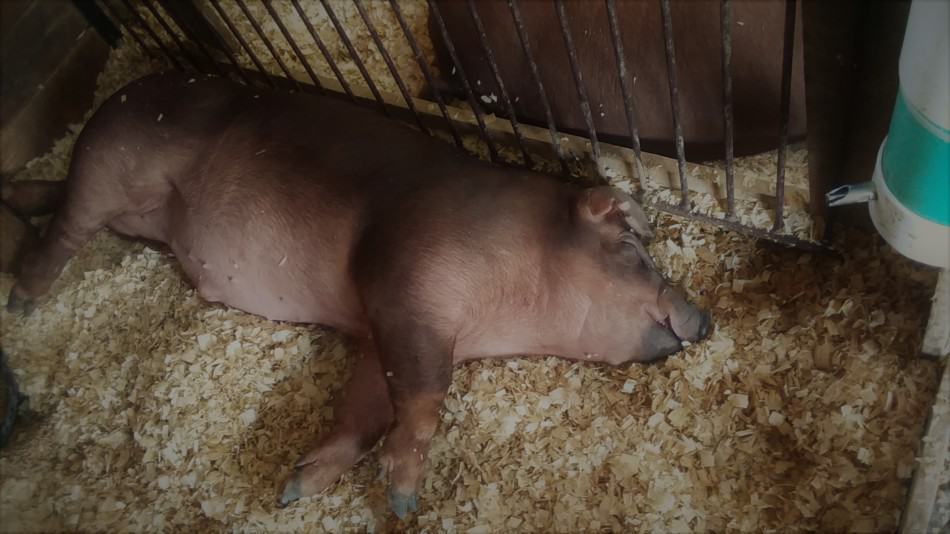
Since this is a smaller waterer, you will need to closely monitor the water level in the pipe.
If you have more than a two or three pigs, you’ll need a bigger waterer than this or you’ll be filling it (and risking running out of water) frequently.
9. Use electric fence for pastured pigs
While pigs can be hard on other types of fencing, electric works great for them.
Pigs are very aware of electric fencing, once they are trained to it, and will not go anywhere near the line when it’s on.
You can buy electric netting specifically made for pigs or just use wire or polybraid.
Electric netting not made for pigs will get grounded out by the rooting and tossing of clumps of dirt onto the bottom of the netting.
Have a wooden, not electric, gate
If you need to get the pigs to leave the pasture through an opening in the fence, you’ll need to have a wooden gate in the opening.
You need a section of fence that has no power on it (the gate) for them to feed safe walking through.
Just taking down the wire isn’t enough, they still are worried about the wire that used to be there.
One of a pig’s weaker points is vision. Help them out by making the exit super easy to see by having a wooden gate.
One final aspect you may have overlooked. Eventually, you’ll want to load your pigs on a trailer.
Can you get them to the loading area without going over a wire? If not, you still need the wooden gate.
10. Make your butchering appointment early
It is common for people to want to butcher animals for their freezer in the fall of the year.
This makes a ton of sense, you raise them over the nice part of the year and don’t have to worry about snowstorms and frozen water through the winter.
The catch is everyone else is thinking the same thing as you-“Winter is coming, I need to make that butchering appointment.”
You might get lucky and not need to call very far ahead of time.
You might get to jump right into a spot that just opened up because someone else had to cancel. All that might happen, but it’s not likely.
Call ahead. Your local butcher shop wants to help people get their meat processed, but they only have so much building space and manpower.
Respect your local butcher and his time by calling early.
Pigs reach finishing weight quickly, I would call the butcher to set an appointment as soon as you bring home your feeder pigs.
11. Breed matters
While there is no one best breed, there are breeds or crosses of breeds that tend to grow faster than others.
Read this article I wrote Choosing The Best Pig Breeds For Meat for more detailed information.
The most sure fire way to success, especially for a beginner, is to get some high quality crossbred feeder pigs from a local small farmer.
These will be pigs bred to grow and do well in your area.
If you want a specific breed, that’s great. Just realize that, generally speaking, a crossbred will grow faster and be more hardy than a purebred.
If you are just raising pigs for yourself, get the ones that you like.
If you are planning to sell the extra pigs you raise, look into the local demand for small farm raised pork in your area.
Do your friends and neighbors care about the breed of pig they put in their freezer?
In some communities, breed matters. Normally, it’s more about how the pigs were raised and how they taste and less about the specific breed.
12. Fresh feed is better
When you buy feed for your pigs, get enough for 2.5-3 weeks at the most.
Feed does not stay fresh forever. Anything worth eating, for you or your pigs, will go stale.
It is better to buy your feed in smaller batches than to get it all at once and have it setting around.

